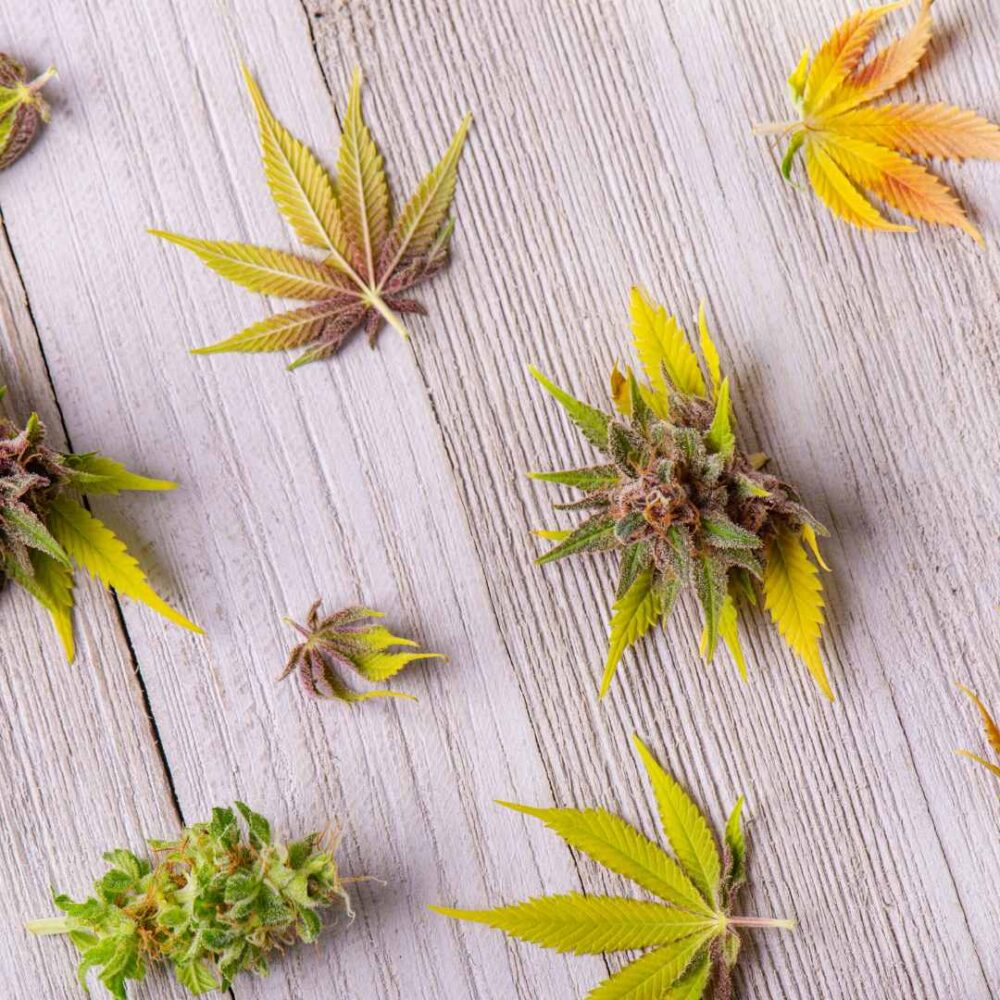
There are many minor cannabinoids found in hemp plants, and since there are over 100 different cannabinoids made, more are being discovered all the time. CBC (cannabichromene) is a minor cannabinoid typically only found in small amounts in purified hemp oils.
The most widely studied cannabinoids, CBD and THC, have a significant body of research showing their potential health benefits and their role in the endocannabinoid system. Because the minor cannabinoids are harder to isolate in larger quantities, ones like CBC have only a modest amount of reported effects.
Lets dive into some of these findings and where CBC could shine.
Article Highlights
- CBC has anti inflammatory properties similar to hemp oil
- CBC is a minor cannabinoid, and is typically in low amount in most full spectrum products
- There are some CBC dominant tinctures on the market, and may provide better analgesic properties than hemp oil
- There is little known about the side effects of CBC due to a minimal body of research
What are major and minor cannabinoids?
The cannabis plant (in which hemp and marijuana reside) produces both minor and major cannabinoids. The only difference between major and minor cannabinoids is the amount of cannabinoids in the flower.The major cannabinoids are:
- THC (Tetrahydrocannabinol)
- CBD (Cannabidiol)
However, for most of the minor cannabinoids, it can be difficult to produce some of them due to the inherit genetics of the cannabis sativa plant.
Some of the more well known minor cannabinoids:
- CBG (Cannabigerol)
- CBC (Cannabichromene)
- THCV (Tetrahydrocannabivarin)
- CBDV (Cannabidivarin)
- CBL (Cannabicyclol)
- CBN (Cannabinol)
Often, the amount of a minor cannabinoid found in CBD oils is in the range from 0.5% up to 3%. This means that the benefits you would get from CBC oil in CBD oil tinctures would be minimal due to its low abundance.
How is CBC made?
Hemp oil (not to be confused with hemp seed oil), comes from extracting the oil from the cannabis plant flower using a range of methods. All the cannabinoids found in the hemp flower, and in the initial hemp oil, are in the acidic form.
All cannabinoids are naturally in the acidic form, and this is how the hemp plant makes all the minor cannabinoids.
The typical cannabinoids you see on the market are a byproduct of adding heat to the natural acidic cannabinoids, converting them to their neutral form.
Lets take a look at how CBC is first made from other acidic cannabinoids.
Natural acidic cannabinoids
The mother cannabinoid from which all other cannabinoids are eventually created is CBGA (cannabigerolic acid).- CBGA is synthesized via cannabigerloic acid synthase
- THCA and CBDA are synthesized from CBGA via THCA and CBDA synthase from CBGA
- CBCA is created via CBCA synthase from CBGA
- CBC is created from CBCA after exposure to heat

As you can see from the picture above, a lot of the
In our Natural Spectrum CBDA oil, which contains all the acidic cannabinoids from the hemp plant, CBCA typically is around 1% depending on the strain of hemp we use.
Benefits of acidic cannabinoids
With recent advances in purification and extraction technology, a few companies are starting to bring acidic cannabinoid products to the market. This has been largely a response to recent research findings on the health benefits of CBDA.
The major problem that is little discussed in the cannabis space is the very poor solubility of CBD when taken orally. This has been shown in many clinical CBD oil trials where higher doses are required to get clinically relevant outcomes. These often range in the 200-2000mg per day dose.
Acidic cannabinoids have much greater absorption than their neutral form counterparts. In fact, CBDA oil is found to be around 450% to over 1000% better absorbed than CBD oil.
This superior absorption property of acidic cannabinoids seems to hold for all the minor cannabinoids as well.
History of Cannbichromene
CBC was first discovered in 1966 by Dr. Raphael Mechoulam, and was considered one of the most prominent cannabinoids in the cannabis sativa plant. However, the breeds of plants at the time did not get preserved, and the current batch are largely CBD or THC dominant.Benefits of CBC vs Hemp Oil
With new isolation technologies on the rise, more minor cannabinoids are being studied for potential benefits. Although still new to the CBD products space, CBC can now be found in tinctures at relatively higher amounts due to new isolation technology.
How does CBC vs CBD oil stack up?
Similar to CBD oil, CBC does not have psychoactive effects.
Anti convulsion properties
Similar to CBD oil, CBC and it precursor CBCA were found to have anti convulsant properties on pre clinical trials. While the studies did not highlight specific mechanisms of protection, they did note that CBCA has substantially higher plasma concentrations (about 500% more) than its neutral form counterpart.
CBC and endocannabinoid system
Similar to CBD oil, CBC can interact with core receptors in the endocannabinoid system. Specifically, it has been found to be a CB2 receptor agonist, which one of two primary endocannabinoid receptors (the other being CB1).
While beyond the scope of this article, CB2 receptor function is closely associated with many physiological processes, like mood and inflammation.
CBC and lung function
CBC was recently found to help with acute respiratory distress syndrome, a sever pathology that arises in the lung. In pre-clinical trials, administration of a CBC spray was able to rescue breathing through increased activation and production of two critical cell surface proteins:- TRPA1 - transient receptor potential (TRP) cation channel subfamily A member 1
- TRPV1 - transient receptor potential cation channel subfamily V member 1
CBC and anti inflammatory properties
A lot of the cannabinoids found in cannabis plants have anti inflammatory properties, suggesting a common target important to the body's natural balance. CBC is no different, and there are multiple pre-clinical studies showing that CBC can have significant anti inflammatory effects across a number of different disease models.
Conclusion
If traditional CBD oil has not worked well for you, it may be time to try adding CBC to the mix. Not everyone responds the same way, and CBC may have more potent effects on pain and inflammation than conventional hemp oil.
Best type of CBC oils
To get the most out of CBC, you will want to look for it to be combined with a full spectrum CBD oil. This way you get the synergistic effects of all the cannabinoids.Make sure to check that you are getting a good amount of CBC in each dose. Often strain will be marketed as "high" in CBC, but that may only mean 5%. You will want at least 15-30mg of CBC per dose.
Your CBC product should come with a Certificate of Analysis (CoA) that shows the amount of cannabinoids. If you do not know how to read a CoA, see our CoA guide for help.
The CBC CoA should assess for the following:
- Potency - the amount of cannabinoids
- Pesticide residue - any residual pesticides
- Heavy metals - since the hemp plant can absorb heavy metals from the soil, its important to test for this.
- Solvents - some chemicals can be left in the CBC oil during purification if the manufacturer does not follow good practices
- Microbials - the product should be tested for presence of any potential pathogenic bacteria or mold

